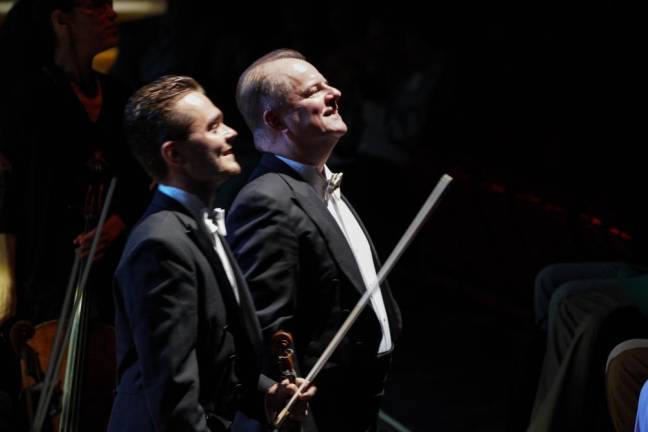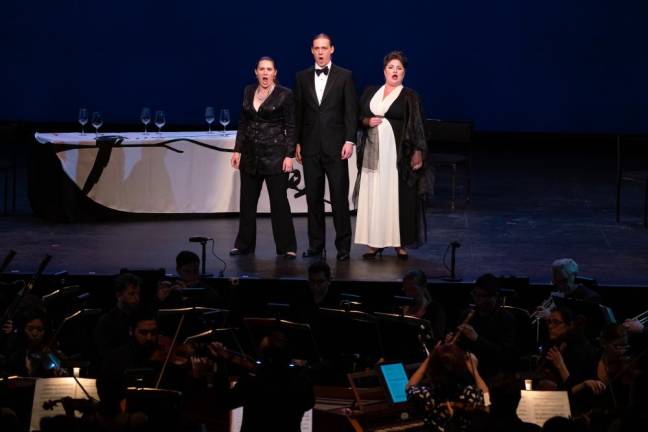Two things many of us missed most during the lockdown were getting a haircut and live music performances. Luckily in New York City, the barbershops and hair salons have been reopened for months now. But live music performances, particularly opera, are still hard to find. Lincoln Center has been silent since March 2020. The Metropolitan Opera is planning on reopening on September 27. But for classical music and opera fans this has largely been another summer without song.
Well, on July 27 and 28 all that will change when singing barber Figaro returns to Lincoln Center in two semi-staged concert performances of Gioachino Rossini’s opera buffa “Il Barbiere di Siviglia” (“The Barber of Seville”), presented by Teatro Nuovo at Damrosch Park with full orchestra and chorus.
Teatro Nuovo (https://www.teatronuovo.org) is part bel canto boot camp, coaching young opera singers and instrumentalists in the historical performance practices of early 19th century Italian opera. Their other role is as concert presenter putting those lessons into practice in period style concert performances of bel canto operas by Rossini, Bellini, Mayr and Donizetti.
I had an online conversation with Will Crutchfield, Teatro Nuovo’s Artistic and General Director and Associate Artistic Director and first violinist Jakob Lehmann, who will be leading the performances in collaboration.
Will, why have you chosen “Il Barbiere di Siviglia” to reopen Lincoln Center to live opera performance?
Crutchfield: We had planned for our next Rossini to be “Maometto Secondo,” which is a magnificent opera, but dark and serious. We will do it next year. For an outdoor performance to celebrate the return to activity, it makes more sense to do a beloved comedy.
This is a concert version of a comic opera familiar to most opera audiences. Will there be a staging, physical comedy and characterizations or will the focus be on the music and singing alone?
Crutchfield: We call it “semi-staging” - the singers have room to interact with each other and characterize their parts, so yes, they will be acting, but there is no stage director. The emphasis here is on empowering the individual performer.
At the 2008 Caramoor Festival, Maestro Crutchfield conducted a concert “Barbiere” using a baton. Teatro Nuovo follows early 19th century practice, splitting the conductor’s duties between Maestro al Cembalo (Will), who also accompanies the recitatives on fortepiano, and Primo Violino (Jakob Lehmann) leading the orchestra from the first violin chair. What do each of you do in performance?
Lehmann: There is no clear division between the roles. The piano is historically more connected to the singers, since the Maestro al Cembalo was usually the person who worked with them before the orchestral rehearsals, and the Primo Violino was the in-house concertmaster who was responsible for the orchestra all season long. Once the orchestra joins in, the violin is generally giving the beat because the impact of the bow on the strings is better visible for everybody. But our general performance ideal is much more like chamber music where everybody has a role in keeping the musical flow going and the ensemble together.
Crutchfield: Even the recitatives are collaborative. The bass player lays down the fundamental, and the cellist and I play whatever comes into our heads.
For a long time “Barbiere” was performed in an orchestration not by Rossini but an expanded version prepared and published by Casa Ricordi. That bogus orchestration survived well into the 20th century until the 1960’s when the pioneering musicologist and conductor Alberto Zedda restored Rossini’s original instrumentation. You will perform Rossini’s original orchestration in the Bärenreiter critical edition which has unique elements. The instruments have a kind of onomatopoeic quality commenting on the action - the piccolo for example. It is almost a comedic character in itself.
Lehmann: Rossini’s original orchestration is not only brilliant, but also very personal, and at the same time practical: he used only the instruments available at the particular occasion of the premiere, so adding others actually reduces the sense of his choices. As with so many Rossinian scores, the wind writing is very demanding and virtuosic, but there is also a lot of coloristic use of particular techniques in the string section - for example the quite characteristic nasal sound of “sul ponticello” [the bow is held high upon the bridge producing a higher thinner sound]. The orchestra is not only commenting on the words of the singers, but framing the mood of each scene. It is very transparent and chamber-like, which fits the approach of Teatro Nuovo perfectly well.
Will, you teach vocal ornamentation as part of your Bel Canto boot camp at Teatro Nuovo. Rossini left many samples of ornamentation for “Barbiere” which have survived and are in the critical edition. Are you using these or developing your own ornamentation tailored to the singer?
Crutchfield: We are using some of Rossini’s own ornaments, some from other historical sources, some invented by us collaboratively, and some improvised on the spot. Our informal rule: if an ornament is familiar from other performances, it is forbidden in ours. This is part of Teatro Nuovo’s broader approach - we are trying to look at the score as though it had been discovered last month in an archive somewhere, and to pick our own path through it, using what we know about the style of the time.
“Il Barbiere di Siviglia” will be performed in Damrosch Park at Lincoln Center on July 27 and 28 at 7:00 pm. Tickets are available here: https://tickets.lincolncenter.org/ or by calling the Lincoln Center Box Office at (212) 721-6500. (https://www.teatronuovo.org)

